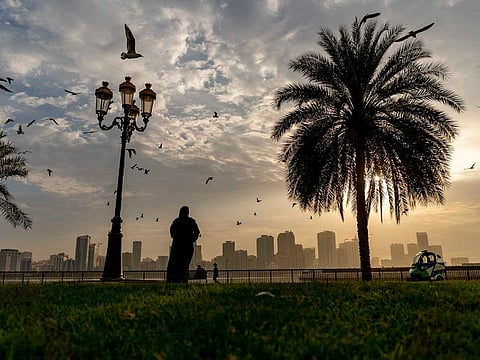End of winter soon? March to come with increase in temperatures, rain
Wind is expected to cause unstable conditions at sea, dusty weather is expected at times

Dubai: UAE residents can enjoy one more month of winter as March will mark the end of the season with an increase in temperatures, a recent weather report by the National Center of Meteorology (NCM) stated.
The NCM released a detailed report on what the weather would be like in the coming month.
March is considered to be last month of winter, and temperatures are expected to rise especially during the second half of the month, the report stated.
“March 21 will mark geographically the first day of spring equinox when the sun's direct rays are perpendicular to the Equator and the apparent motion of the sun moves north toward the Tropic of Cancer,” the report read.
An equinox is the moment at which the center of the visible Sun is directly above the equator. The phenomenon will mark the beginning of spring.
Unstable weather conditions at times
In March, the UAE will continue to be affected by westerly waves passing across the north of the Arabian Gulf associated with upper air troughs which may increase at times over the area.
“These air troughs may cause unstable weather conditions accompanied by cumulonimbus clouds, rain and fresh to strong wind leading to widespread dust and rising sand with poor horizontal visibility especially over open areas,” the report stated.
Cumulonimbus clouds are dense, towering vertical clouds, forming from water vapour carried by powerful upward air currents.
Those with allergies must take precautions as some sandy and dusty days are expected due to the wind and unstable weather at sea on some days.
Will it rain?
The eastern part of the UAE, such as the mountainous emirate of Fujairah, will be impacted by the Indian monsoon season.
This may lead to the development of clouds with thunder and rain which might extend to internal areas of the country getting showers of different intensities, the NCM reported.
Wind and humidity
In the month of March, the prevailing wind is expected to be southeasterly to southwesterly during late nights and mornings changing to northwesterly to northeasterly during the afternoons and evenings due to the sea breeze and land breeze circulation, the NCM reported.
There’s good news for those who are not fond of humidity, as the relative humidity is expected to decrease in March compared to February, especially during second half of the month.
The average relative humidity is expected to be at 52 per cent with a chance of scattered fog and mist formation over some parts of the country.
The temperatures are expected to be in the mid-20s as the average air temperature for the month of March ranges between 22°C and 24 °C, according to the NCM.
Sign up for the Daily Briefing
Get the latest news and updates straight to your inbox







